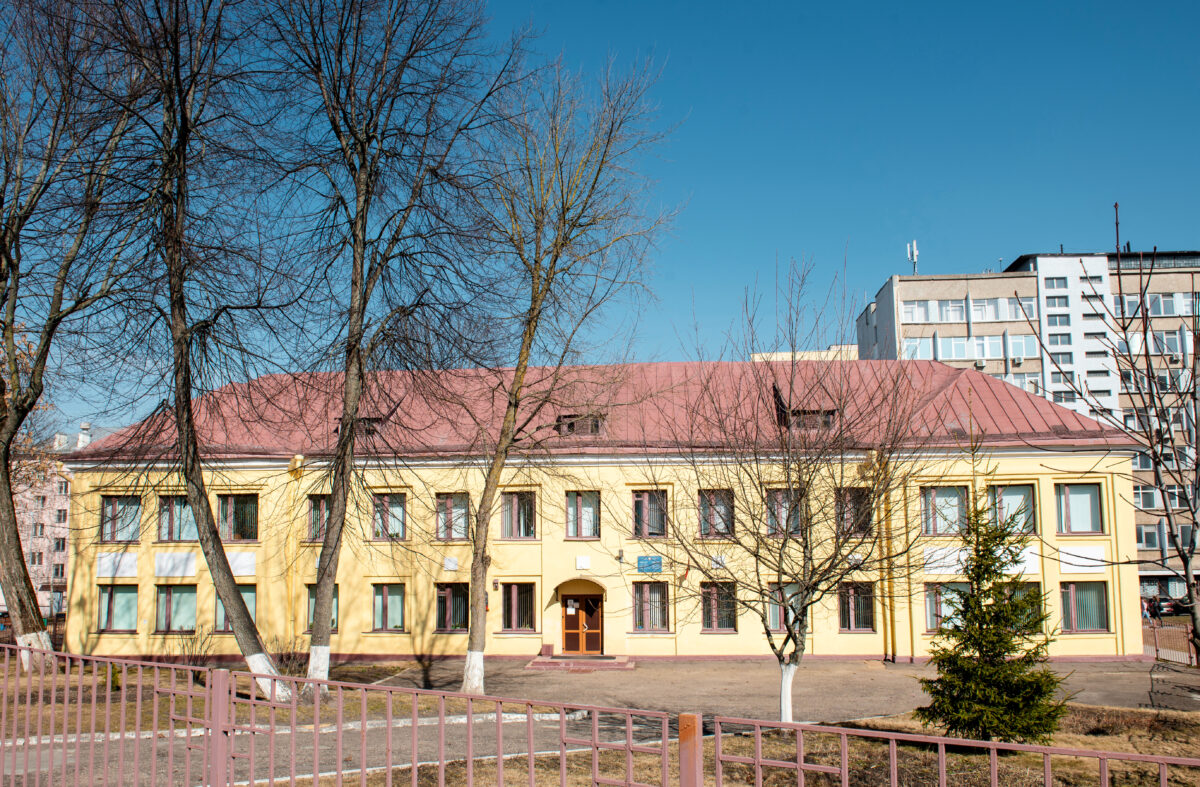On Karol Street one of the few original buildings of the former Minsk ghetto can be found. Today, it is a music school for children. Since the 1970s, a district Party committee has been located here. However, in the time of the Minsk ghetto, this building served not only as a hospital but was also the base of the underground movement against the German occupation. A commemorative plaque marks the significance of the location.
Organized resistance in Minsk began already in August 1941 when the first meeting of the underground movement was held. The meeting’s participants were unanimous that the only way to survive was to escape and to start fighting the enemy. However, it was clear that they would need assistance from the non-Jewish population. Later, the resistance movement began to make necessary contacts outside the ghetto.
Those in the resistance collected weapons, medication, and warm clothing. The goal of the organized resistance movement was to go beyond self-preservation and towards military resistance, which included organizing the escape of ghetto prisoners to join the partisans.
Rita Kazhdan, who survived the Minsk ghetto by joining the resistance and fighting as a partisan, remembers: “One of the army prisoners working in the Daimler-Benz factory made a false bottom in my pot, in which I piled up cartridges stolen from an ammunition dump. I passed them on to a guy named Yuzik. I knew he had connections to the Suvorovsky partisan group, and he promised to take my brother and me out into the forest. In the summer of 1943 Yuzik vanished. I felt very sorry for him, and with his disappearance my hopes collapsed too. Then we began to prepare strenuously to become partisans. Having accomplished a dangerous 18-km march from the city to the East, my brother came to the village where we had rented a summer cottage before the war. The locals confirmed that the partisans were in the vicinity, but every night the Germans came to the village and conducted a search of each house, each corner of the cellars and lofts. My brother came back with no result. But such obstacles only intensified our desire to join the partisans.”
Maya Krapina and her brother also joined the partisans:
[It was 1943.] No mother, no grandfather, no grandmother: only me, my brother, and one older sister were left. My older sister was handed over to an orphanage. Who handed her over, I still don’t know […] And I was left alone with my brother. He took people out of the ghetto, and when he left with a group, he left me with a woman who lived in our house. He said to her: “I’ll be back soon,” and “you look after Maya, then I’ll take you to the partisans as well.”
Well, she looked after me as best she could, then one day she did not return […] The Nazis were already destroying work units […] I was left completely alone, I was already all swollen, my legs, my arms. My head was covered in lice, it hurt like a hat was on my head. I lay on the ground and said: “I wish I had died rather than suffer like this.” And suddenly my brother returned. He entered through the fence from the side of the station and some young guys met him at the Jewish cemetery. “Where are you from?”
When they found out that he had come from the partisans, they immediately placed him in a Jewish hospital and said: “We are gathering a group here, you will take this group and medicine and weapons to the partisans and we will take care of your sister.” […] On October 21, 1943 […] I went out and saw that there were a lot of cars, motorcyclists, German troops, and policemen near the gate. I immediately guessed that this was a pogrom. I ran to the window and began to shout: “Yoska! There will be a pogrom!” And he went down the drainpipe from the second floor and we ran with him. We entered one house, the second, the third house, all the malinas were overflowing. And thank God that we did not disappear into the malinas. We ran to the Jewish cemetery and he said: “Come on, (we will see) what will happen.” I couldn’t walk anymore, he took me on his shoulders and we were at the end of the fence. We looked at the fence, there was no one, because all the forces had already been gathered to destroy the ghetto. And he and I crawled under the fence, tore off these yellow lata (patches). Of course, they were torn and dirty, and about 15 guys ran after us, mostly boys.
Elena Drapkina, herself a partisan fighter and ghetto survivor, speaks of the danger for those who were involved in the resistance movement:
“I’d like to tell you a little about my friend Masha Bruskina. We made friends with her before the war when we studied in the theatrical studio. During the German occupation Masha got fixed up in a job at a hospital situated out of ghetto limits. They did not want Jews to work there. So Masha colored her hair blonde and managed to get that job. When wounded men recovered, they usually were sent to Germany for forced labor. To avoid this, Masha got civilian clothes for them and helped them to find partisans. But it could not go on without end: someone informed the Germans about Masha. The Germans arranged a demonstrative execution and hung Masha in one of the Minsk squares. Her body was left on the gibbet for a long time. Having learnt about it, Masha’s mother, who was in the ghetto together with us, went crazy.”
